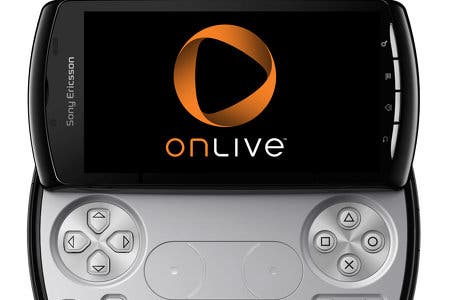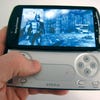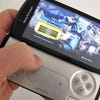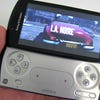Xperia Play with OnLive: The Real Next-Gen Handheld?
Is this cloud combo the future of gaming on the go?
PlayStation Vita is the most powerful handheld system in world, with titles like Uncharted: Golden Abyss and WipEout 2048 representing the current state-of-the-art in gaming on the go. But what if you could play full PC versions of LA Noire, PES 2012, Batman: Arkham City and Assassin's Creed: Revelations on the move? What if you could play them on your existing mobile phone, with frame rates up to 60FPS? That's the mouth-watering prospect offered up by the mobile version of OnLive, and in Sony's Xperia Play the cloud service has found a perfect companion.
Just before Christmas, OnLive launched a smartphone application allowing players to leave behind their OnLive set-top box and go mobile with a range of over 100 PC titles streamed over the Cloud. The result is an experience that, at its best, even the shiny new Vita struggles to replicate; current-gen AAA games playable on a device that slips effortlessly into your pocket and can go with you anywhere.
Of course, there are a couple of problems in achieving this videogaming nirvana. Your average mobile phone lacks the physical interface required to truly enjoy such games, and the dire nature of 3G connection performance makes Cloud gaming viable only when you're in range of a decent WiFi connection.
The criminally underrated Sony Xperia Play solves one of these problems at least. This particular handset boasts slide-out gaming controls, complete with eight-way d-pad, twin analogue touch-pads, four face buttons and two shoulder triggers. The phone's volume rocker - which sits in the middle of the aforementioned triggers - even doubles as the left and right 'bumpers' found on the Xbox 360, PS3 and OnLive pads.
"Xperia Play with OnLive offers a tantalising glimpse of how cloud services could revolutionise the future of mobile gaming."
Mobile Cloud Gaming: Right Here, Right Now
Given this dazzling array of physical inputs, it should come as no great shock to learn that the Xperia Play handles OnLive games with aplomb. Controls are automatically mapped to the appropriate button, meaning no customisation is called for on behalf of the player. It's clear that OnLive has looked closely at the Play's unique interface and has wisely engineered its Android client to suit - providing perhaps the most convincing vehicle for OnLive yet, and giving Sony Ericsson's overlooked handset a much-needed shot in the arm.
If you've already poured cash into the OnLive dream and have a considerable array of titles, or if you subscribe to the £6.99 per month "all you can eat" PlayPack collection, the Xperia Play makes for an intriguing addition. The ability to synchronise your progress between platforms means you could potentially pick up your adventure where you left off during your lunch break at work, or jump onto your phone when your flatmate or other half decides to monopolise the television set. There's been plenty of talk about syncing game states between PS3 and Vita - something we've already seen in MotorStorm RC - but with OnLive, it's a system-wide function that works on all games and is just one of the advantages of cloud gaming. Move from TV to laptop to tablet to smartphone and your game saves all move with you, with zero effort required by the player.
OnLive is clearly aware that the union between smartphone and cloud gaming has the potential to be a game-changer for its business. The real question is how the company chooses to leverage this intriguing development.
"I think the price of the Xperia Play is really attractive now, and we definitely want to look closer at what that could potentially bring," comments Bruce Grove, General Manager of OnLive. "We wanted the OnLive platform to be something you could take with you and play anywhere. As long as you have access to a decent network, we can bring top-tier gaming to any device."
As Grove touches upon there, after the issue of physical controls, connectivity is the second major problem holding back smartphone cloud gaming from making traditional handhelds obsolete. OnLive recommends that mobile players utilise a WiFi link or 4G network to get the best experience - the latter of which is only just hitting the US and won't be rolling out in the UK for a couple of years yet. Play over a 3G connection is hypothetically possible, but frustratingly impractical - the OnLive app often drops the connection or flat-out refuses to load when it detects a less-than-ideal transfer speed. Even over WiFi, the visuals have a tendency to appear fuzzy and ill-defined, depending on the action and the game.
On the flipside, when hooked up to a decent connection, OnLive titles are in a different class to what is currently available on handheld gaming platforms - these are, after all, full-fat PC games in action. Over and above that, because all the hardware processing is done server-side, the tech behind cloud gaming can improve without the player having to fork out for costly upgrades. Theoretically, the Xperia Play could host cutting-edge OnLive titles for many years to come - but even if it doesn't, it almost certainly offers a captivating glimpse of the next evolution in handheld gaming.
"When hooked up to a decent connection, OnLive titles are in a different class to what is currently available on handheld gaming platforms - these are, after all, full-fat PC games in action."
Of course, in the here and now, there are drawbacks, even with the service operating on a superb connection, and that's down to the limitations of cloud gaming itself at present. At Digital Foundry we've already discussed the latency issues of OnLive, and commented on the somewhat variable picture quality. Competitor Gaikai reckons it has some of the answers as it prepares to roll out its full-game service.
It hosts more servers closer to the players, with a UK datacentre in London (OnLive UK is currently based in Luxembourg) which should in theory cut down latency significantly, and Digital Foundry comparisons on Assassin's Creed Revelations - one of only two games hosted on both cloud services - clearly shows superior image quality compared to OnLive. A full Face-Off of the two services as they stand right now is currently in production, but you'll find some head-to-head images on this page which demonstrate quite a difference in image fidelity.
The bottom line is remarkably straightforward: competition is driving improvements in cloud technology, and players can only stand to benefit.
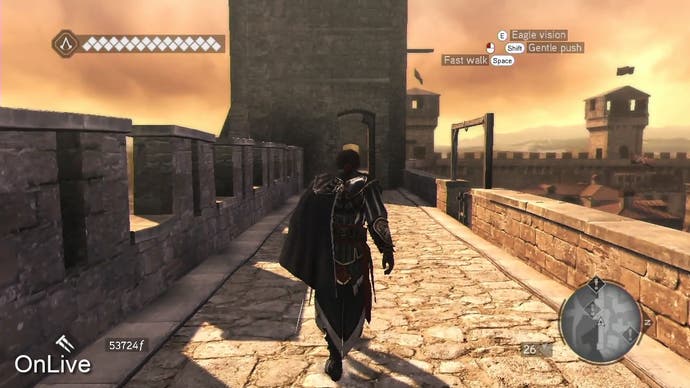



The Future of Portable Cloud Gaming
Former Shiny Entertainment head David Perry is CEO at Gaikai and is an immensely enthusiastic, charismatic proponent for cloud gaming. As you might expect, he has no doubts that mainstream mobile cloud gaming is on the horizon; it's just a matter of finding the right time and platform. At the moment, he argues, people are content with the current standard of portable gaming because they don't really expect anything more.
"Cloud gaming will be the perfect reason to upgrade to 4G. The timing could not be better, as major networks are spending billions right now building out massive 4G infrastructure." - David Perry, Gaikai CEO
"Mobile phone games are completely safe, until you get a taste of something that mobile phones cannot do," says Perry.
"Whatever chip makers tell you, the mobile experience is always a few years behind what's possible on desktops. This is simply due to price and power requirements; desktops and servers will always be more powerful and more expensive because they don't have the same physical, power, storage, and price restrictions."
This is where the cloud streaming becomes vitally important. You can offer a top-of-the-range gaming experience on a mobile device as small as a mobile phone - assuming the connection is up to the job. Perry feels that OnLive's decision to launch its mobile client before 4G coverage becomes significantly widespread could be a mistake.
"3G has too much latency and steady-state bandwidth is often low, which means muddy images. I believe that's starting off on the wrong foot and does more damage than good," he states.
"Instead of forcing a square peg into a round hole, cloud gaming will be the perfect reason to upgrade to 4G. The timing could not be better, as major networks are spending billions right now building out massive 4G infrastructure. The bandwidth is way more than we need and the latency is dramatically better."
Gaikai is committed to cellular gaming over IP but won't commit to it wholeheartedly until the infrastructure is there to produce a good enough gaming experience, and that means attacking the mobile market once the 4G infrastructure is in place.
"At Gaikai we believe the right way to approach mobile is to start with 4G so the experience is amazing. We also want to give developers a chance to add 'mobile mode' to their user interfaces. We can signal them to know what device they are on and they can tune the controls, on-screen text and other elements," Perry enthuses.
"Just imagine your phone giving you an experience that's just impossible from the hardware in your hand, and the ability to play games of unlimited size. Remember there's no download, so the game can be fifty times bigger than the biggest console game today, and it won't cost any valuable storage space on your device. And don't forget that cloud gaming on these devices doesn't cost any more to actually achieve - no new chips are required."
"In five years we could see a pure cloud phone on the market... No CPU, no graphics processor, no storage, just a $50 super-slim 4G streaming device that's a window on unlimited computing power." - David Perry
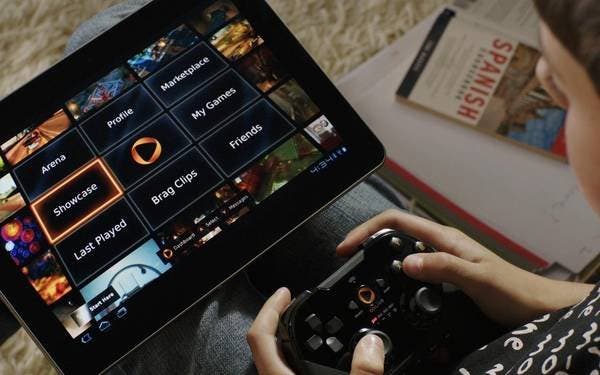
This combination of ultra-portability, low cost and bleeding-edge gaming could well spell the end of traditional handhelds as we currently know them once the infrastructure is in place and the bandwidth costs are manageable. Rather than being entrenched in the realms of fantasy, it's actually happening right now. OnLive on Android is merely the start.
However, assuming for a moment that the Xperia Play isn't the device to signal this glorious revolution, what's next for mobile cloud gaming?
"In five years we could see a pure cloud phone on the market," replies Perry. "That means no CPU, no graphics processor, no storage, just a $50 super-slim 4G streaming device that's a window on unlimited computing power. What's amazing is this is actually possible now; someone just needs to build it with us."
Perry clearly has mobile expansion in his sights, but could competing firm OnLive's recent toe-dipping exercise be part of a larger strategy for the company? It has already manufactured set-top boxes in order to spearhead its domestic plans; surely a stand-alone handheld, tablet or smartphone isn't out of the question?
"We have to be careful about how much we try to take on," OnLive's Bruce Grove tactfully replies. "We're still a relatively small company, and for us we've always believed the path to success is by being as device-agnostic as possible. If you look at the players and the costs involved in bringing out a portable game device, I believe we'd rather leave it to others and work with them on making the OnLive experience the best it can be with each device. Of course, never say never."
